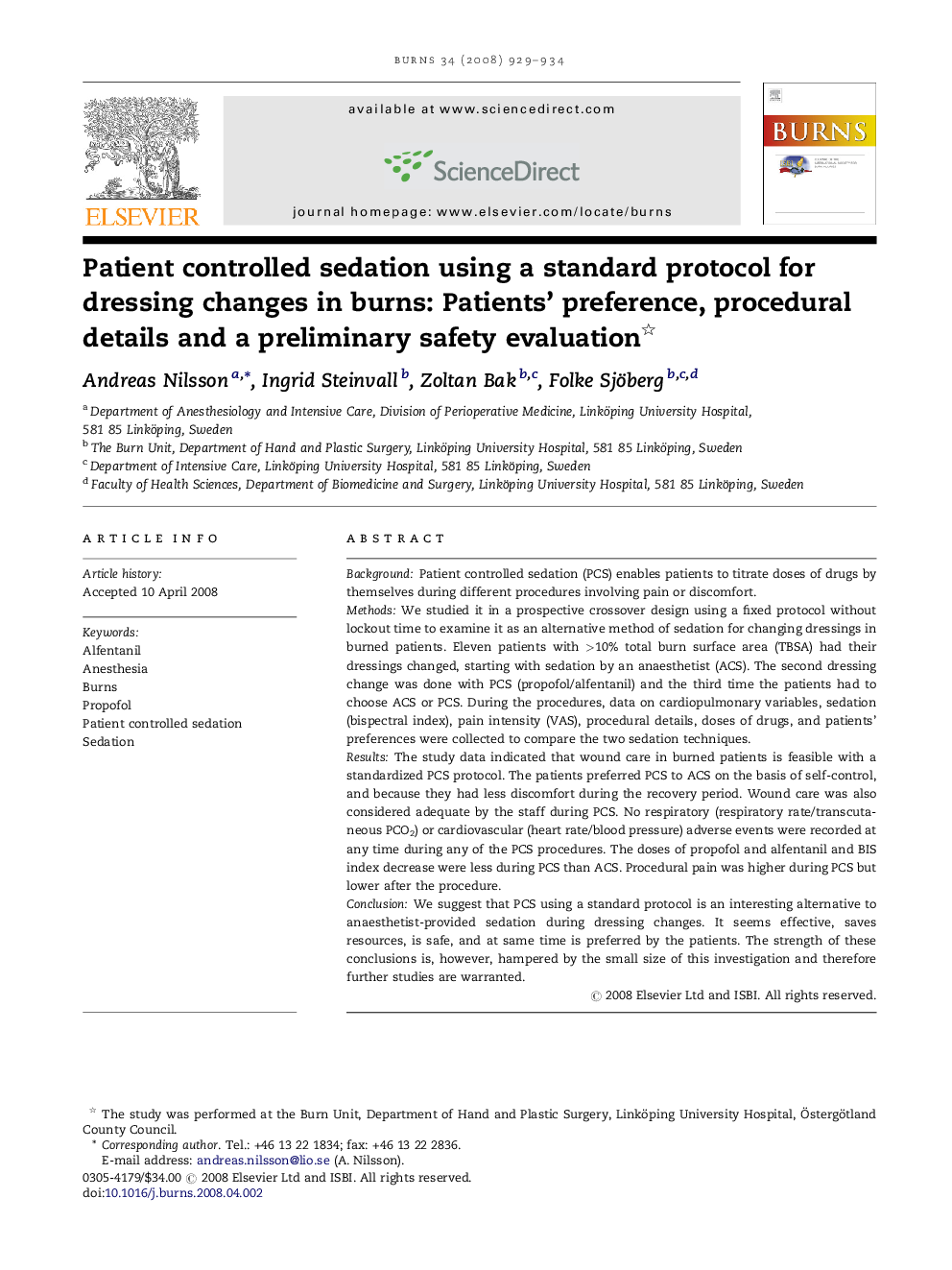| Article ID | Journal | Published Year | Pages | File Type |
|---|---|---|---|---|
| 3106294 | Burns | 2008 | 6 Pages |
BackgroundPatient controlled sedation (PCS) enables patients to titrate doses of drugs by themselves during different procedures involving pain or discomfort.MethodsWe studied it in a prospective crossover design using a fixed protocol without lockout time to examine it as an alternative method of sedation for changing dressings in burned patients. Eleven patients with >10% total burn surface area (TBSA) had their dressings changed, starting with sedation by an anaesthetist (ACS). The second dressing change was done with PCS (propofol/alfentanil) and the third time the patients had to choose ACS or PCS. During the procedures, data on cardiopulmonary variables, sedation (bispectral index), pain intensity (VAS), procedural details, doses of drugs, and patients’ preferences were collected to compare the two sedation techniques.ResultsThe study data indicated that wound care in burned patients is feasible with a standardized PCS protocol. The patients preferred PCS to ACS on the basis of self-control, and because they had less discomfort during the recovery period. Wound care was also considered adequate by the staff during PCS. No respiratory (respiratory rate/transcutaneous PCO2) or cardiovascular (heart rate/blood pressure) adverse events were recorded at any time during any of the PCS procedures. The doses of propofol and alfentanil and BIS index decrease were less during PCS than ACS. Procedural pain was higher during PCS but lower after the procedure.ConclusionWe suggest that PCS using a standard protocol is an interesting alternative to anaesthetist-provided sedation during dressing changes. It seems effective, saves resources, is safe, and at same time is preferred by the patients. The strength of these conclusions is, however, hampered by the small size of this investigation and therefore further studies are warranted.
